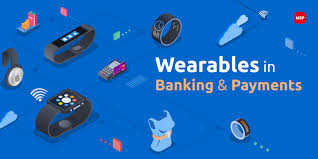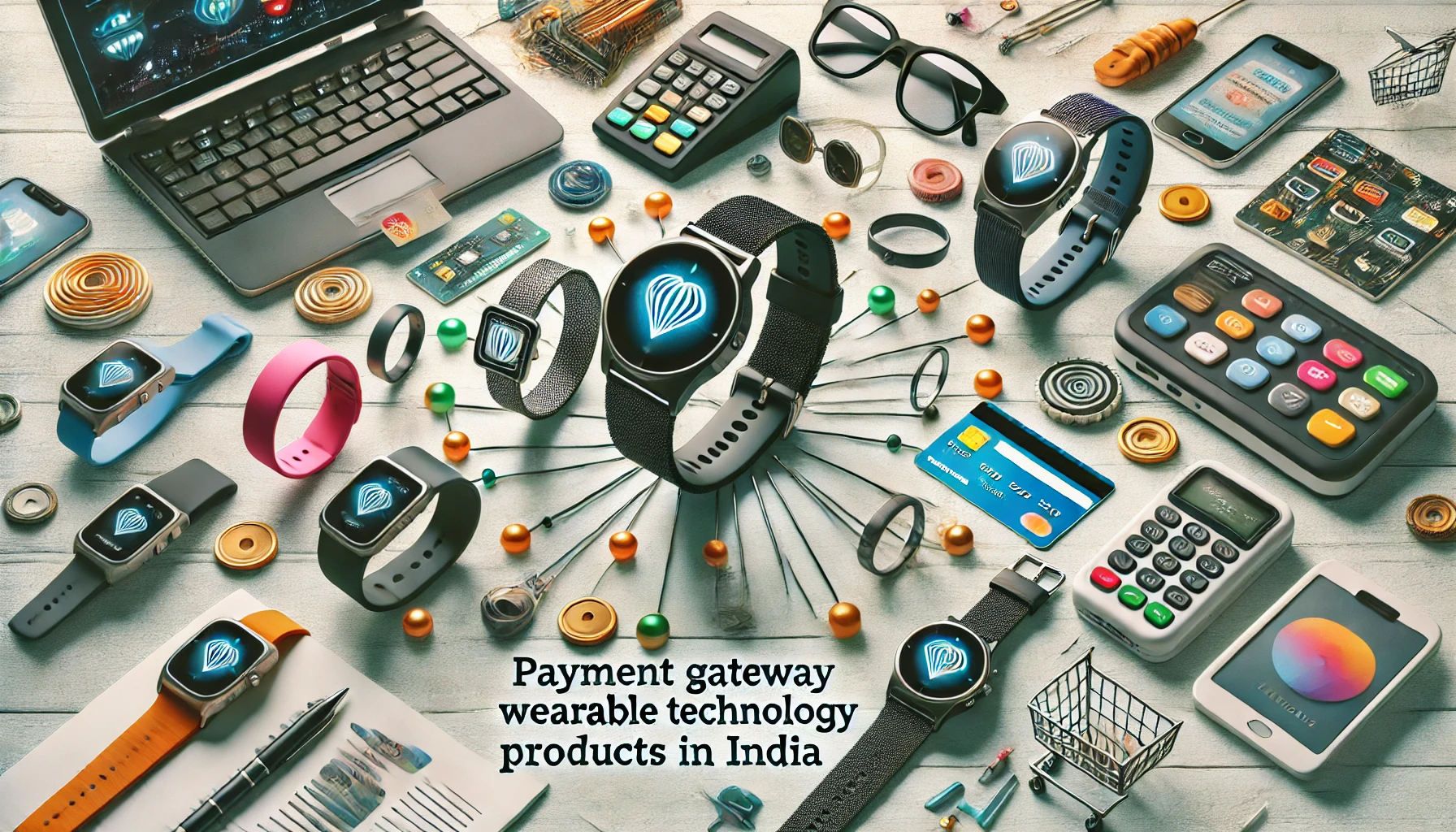Name : Freya

is rapidly transforming the way people live, communicate, and now, even pay for their daily needs. With innovations like smartwatches and fitness bands gaining massive popularity, the integration of payment gateways into these devices is revolutionizing the payment landscape. In this article, we will explore the rise of technology products in India, how they work, their benefits, and the challenges that lie ahead.
What is Wearable Technology?
Wearable technology refers to electronic devices that can be worn on the body, such as smartwatches, fitness trackers, and even smart clothing. These devices are designed to provide enhanced convenience, fitness tracking, and health monitoring. Over the past few years, the scope of has expanded beyond fitness into areas like Payment Gateway in India, providing users with the ability to make transactions directly from their devices.
The Rise of Payment Gateway Technology
India has seen a rapid adoption of digital in recent years, driven by the government’s push for a cashless economy, Wearable technology products in India the rise of mobile banking apps, and the increasing use of digital wallets. Payment gateway technology enables secure and seamless transactions between consumers and merchants. The integration of these payment systems into wearable devices has created a new frontier in digital payments, offering more convenience and security for consumers.
Why Integrate Payment Gateways into Wearables?
Incorporating payment gateway technology into makes transactions more convenient and secure. Consumers can simply tap their wearables, like a smartwatch or ring, to make payments without needing a physical wallet or smartphone. Additionally, Secure Payment[1] the integration of biometric authentication features enhances security, providing users with a seamless and experience.
Popular Wearable Technology Products in India
In India, several wearable devices are now offering integrated options:
- Smartwatches: Devices like the Apple Watch, Samsung Galaxy Watch, and Fitbit support NFC payments via services like Apple Pay and Google Pay. These watches allow users to make contactless payments[2] directly from their wrist.
- Fitness Bands: Fitness trackers such as the Xiaomi Mi Band and Honor Band are also incorporating payment options, enabling users to make quick payments while tracking their fitness goals.
- Wearable Payment Rings and Bands: Some brands have gone a step further by creating rings and wristbands that are specifically designed for payments, offering a highly convenient and futuristic solution for contactless payments.
Major Players in the Indian Wearable Payment Gateway Market
- Apple: The Apple Watch has been a frontrunner in integrating payment gateways with Apple Pay, enabling Indian consumers to make NFC-based payments directly from their wrist.
- Samsung: Samsung Pay, integrated with Galaxy Watch and Samsung smartphones, has made significant strides in popularizing wearable payments in India.
- Fitbit : Pay enables users to complete secure transactions using their Fitbit devices, whether it’s a fitness tracker or a smartwatch.
- Garmin: Garmin Pay, another major player, has made its mark in the Indian market with its smartwatch models offering payment integration[3].
These companies are collaborating with banks like HDFC, ICICI, and Axis Bank, and payment service providers[4] like Visa, MasterCard, and RuPay to ensure smooth transactions.
How Payment Gateways in Wearables Work
Wearable payment systems typically rely on NFC (Near Field Communication) technology, which enables contactless payments. The wearable device stores payment details securely and uses encrypted communication to make transactions. To authorize payments, many devices incorporate biometric authentication features like fingerprint scanning or heart rate recognition.
Benefits of Wearable Payment Gateways in India

- Speed and Convenience: Making payments through a wearable is faster than using a card or cash. It’s a tap-and-go solution, which is ideal for quick, everyday transactions.
- Security: Wearable payment devices use encryption and biometric authentication to ensure the safety of users’ financial data.
- Cashless Transactions: The integration of payment gateways promotes a cashless economy, making it easier for users to engage in digital transactions without needing to carry physical money or cards.
- Financial Inclusion: Wearable payments can help in reaching a broader audience, especially in areas where traditional banking services are limited.
Challenges and Barriers in Adoption
While wearable payment technology is growing, there are several challenges in its adoption:
- Awareness and Trust: Many consumers are still unfamiliar with wearable payments and may have concerns about the security of their financial data.
- Privacy and Security Concerns: Some users fear data breaches or unauthorized access to their payment information.
- Cost and Accessibility: High-end wearables like Apple Watches are expensive, making them inaccessible to a large portion of the population.
Impact of Payment Gateways on the Indian Consumer Market
The integration of payment gateways into wearable devices is altering the way consumers approach payments. With the ease of making quick transactions directly from a smartwatch or ring, people are becoming more comfortable with digital payments. This shift is helping drive cashless payments, which are expected to become a larger part of the Indian economy.
The Future of Wearable Payment Technology in India
As the technology evolves, wearables will likely become even more integrated into daily life, not just as a payment tool but also as a key part of personal health, security, and convenience. Innovations such as AI-powered smart payments, further integration with IoT, and more affordable wearable devices are expected to increase adoption rates.
Regulatory Environment for Wearable Payments in India

The Reserve Bank of India (RBI) and other financial authorities are laying down the groundwork for secure digital payments[5], including wearable payments. With the ongoing push towards digitization, regulations are evolving to ensure consumer protection, data security, and privacy. As wearable payments become more common, it will be essential for these devices to comply with stringent regulatory standards to ensure safety.
How Wearable Payments Are Revolutionizing E-Commerce
Wearable payments are also making their way into the e-commerce space. Integrated with platforms like Amazon, Flipkart, and Snapdeal, users can now make quick, secure payments directly from their wearables, leading to a faster and more seamless online shopping experience.
Global Influence on India’s Wearable Payment Landscape
India is closely following global trends in wearable payments. Countries like the USA, the UK, and Japan have already embraced this technology, and the success stories from these regions are shaping the Indian market. For instance, Apple and Google Pay’s popularity abroad is pushing Indian consumers to adopt similar technologies.
Conclusion
Wearable payment technology in India is growing at a fast pace, thanks to the rising demand for contactless, secure, and convenient payment methods. With the integration of NFC, biometric authentication, and collaboration with major banks, consumers are now enjoying seamless payment experiences through their smartwatches, fitness bands, and even rings. Despite challenges related to awareness and security concerns, wearable payments have the potential to revolutionize the payment landscape in India.
FAQs
Will wearable payments become more common in India?
Yes, with growing adoption and advancements in technology, wearable payments are expected to become increasingly popular in India.
How does wearable payment technology work?
Wearable payment devices use NFC technology to transmit encrypted payment information, allowing users to make quick and secure payments.
What are the benefits of using wearable payment systems?
They offer speed, security, and convenience, and help drive a cashless economy.
Which brands are offering wearable payment products in India?
Popular brands include Apple, Samsung, Fitbit, Garmin, and Xiaomi.
Are wearable payments secure?
Yes, wearable payments are secured with encryption and biometric authentication features, such as fingerprint scanning.

